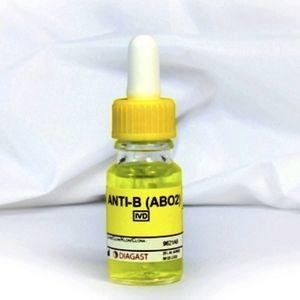- Laboratory >
- Laboratory medicine >
- Reagent >
- Diagast
Diagast reagents
{{product.productLabel}} {{product.model}}
{{#if product.featureValues}}{{product.productPrice.formattedPrice}} {{#if product.productPrice.priceType === "PRICE_RANGE" }} - {{product.productPrice.formattedPriceMax}} {{/if}}
{{#each product.specData:i}}
{{name}}: {{value}}
{{#i!=(product.specData.length-1)}}
{{/end}}
{{/each}}
{{{product.idpText}}}
{{product.productLabel}} {{product.model}}
{{#if product.featureValues}}{{product.productPrice.formattedPrice}} {{#if product.productPrice.priceType === "PRICE_RANGE" }} - {{product.productPrice.formattedPriceMax}} {{/if}}
{{#each product.specData:i}}
{{name}}: {{value}}
{{#i!=(product.specData.length-1)}}
{{/end}}
{{/each}}
{{{product.idpText}}}

... blood grouping. It enables determination of the presence of erythrocytic antigen B on the human red blood cells surface. The reagents are prepared from monoclonal antibodies in a storage medium. The monoclonal antibodies, ...
Diagast

... for blood grouping and Rhesus-Kell phenotyping. It is devoid of antibody activity. Tested under the same conditions as the reagent used, the control enables interpretation of the result obtained. The negative control ...
Diagast

... grouping. It enables the determination of the presence of erythrocytic antigen D on the human red blood cells surface. The reagents are prepared from monoclonal antibodies in a storage medium. The monoclonal antibodies, ...
Diagast

... to different regulatory demands. Anti-D IgG: a very sensitive clone for the determination of weak D, Anti-D IgM: the reagent of choice for blood grouping. It does not react with DVI, Anti-D TOTEM: a formulation ...
Diagast

Blood phenotyping or RH-Kell phenotyping is a quite common routine test in immunohematology. It consists in the investigation of antigens RH2 (C), RH3(E), RH4 (c), RH5 (e) and Kell (KEL1) on the surface of RBC. DIAGAST has a complete ...
Diagast

... RH-K phenotyping. It enables the determination of the presence of erythrocytic antigen K on the red blood cells surface. The reagents are prepared from monoclonal antibodies in a storage medium. The monoclonal antibodies, ...
Diagast

The D (RH1) antigen is one of the most important in transfusion medicine. To some extent because of its immunogenicity, but also because of the great number of variants. Partial and weak variants may represent a puzzle in immunohematology. ...
Diagast

The antisera for extended phenotype, also known as “rare”, are used to determine the presence of antigens other than ABO/RH1 and RH/Kell. DIAGAST proposes a wide range of monoclonal rare antisera, of IgM, IgG and polyclonal type.
Diagast

... IgG and polyclonal type. Monoclonal reagents used in the phenotyping of human red blood cells. The reagents are designed to determine the presence of antigens P1 on the surface of red blood cells. ...
Diagast

The cross-match is a direct compatibility test. It consists in the incubation of RBC from the blood unit with the plasma from the receiver. If the receiver has antibodies against antigens present on the RBC, there will be agglutination, ...
Diagast
Your suggestions for improvement:
Subscribe to our newsletter
Receive monthly updates on this section.
Please refer to our Privacy Policy for details on how MedicalExpo processes your personal data.
- Brand list
- Manufacturer account
- Buyer account
- Our services
- Newsletter subscription
- About VirtualExpo Group



Please specify:
Help us improve:
remaining